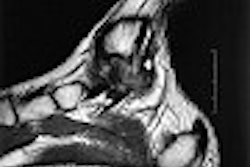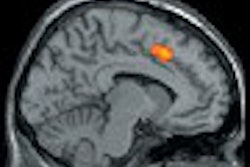The health problems associated with toluene abuse are undeniable -- toxic encephalopathy, cognitive impairment, cerebellar dysfunction, parkinsonism, and hearing loss, to name a few.
For most modern parents, the importance of keeping their kids off narcotics is a no-brainer. But many are unaware of the dangers lurking even closer to home than the ecstasy dealer at the party or the stolen bottle of prescription painkillers. This hidden threat can usually be found under the kitchen sink or in the garage -- in a whole spectrum of household chemicals containing toluene (methyl benzene) that, when inhaled, can cause a transitory intoxicating effect similar to that of alcohol.
Toluene abuse, also known as huffing, snorting, or bagging, is most prevalent among 10-12-year-olds because everyday products containing the organic compound (glue, lighter fluid, cleaning fluids) are inexpensive and readily available, according to the U.S. Drug Enforcement Agency. As many as 20% of junior and senior high school students in the U.S. have tried inhalants, with about 2%-6% reporting long-term use.
The situation is similar in Istanbul, Turkey, where huffing is a significant social problem, according to Dr. Kubilay Aydin from the department of neuroradiology at Istanbul University.
"It is estimated that there are thousands of children and young adults in Istanbul who abuse toluene. The low cost (and) easy availability of (paint) thinner increases the number of child (toluene) abusers," wrote Aydin in an e-mail to AuntMinnie.com.
The health problems associated with toluene abuse are undeniable -- toxic encephalopathy, cognitive impairment, cerebellar dysfunction, parkinsonism, and hearing loss, to name a few. However, the exact mechanism of toluene encephalopathy, as well as the metabolite changes in the central nervous system (CNS) of huffers, is still a source of debate. Using MRI and MR spectroscopy (MRS), Aydin and colleagues set out to investigate the pathophysiology of toluene encephalopathy.
For this study, 22 patients (mean age 18.1 years) were recruited. All had abused paint thinner by sniffing or huffing a cloth soaked in the organic solvent. The mean duration of abuse was 47 months, with a mean of 1.8 cans of thinner bought per day. All of the patients were enrolled in a solvent abuse rehabilitation program at the time of the imaging study. In addition, 20 age- and sex-matched healthy control subjects were included (Magnetic Resonance Imaging, September 2003, Vol.21:7, pp. 777-785).
After a period of abstinence from huffing for 2-8 days, all subjects underwent MRI and single-voxel MRS on a 1.5-tesla whole-body imaging system (Symphony, Siemens Medical Solutions, Erlangen, Germany). The MR sequences included sagittal and axial T1-weighted spin echo, axial T2-weighted fast spin echo, and sagittal, axial, and coronal T1-weighted, all with a slice thickness of 5 mm. Sedation was not required for any of the subjects, Aydin said.
All of the single-voxel proton MRS exams were done on the left side of the brain, with the voxels of interest placed in the posterior centrum semiovale, thalamus, and cerebellar white matter. The voxel size was 8 cm3. A three chemical shift selective (CHESS) saturation pulse was used for water suppression and a stimulated-echo acquisition mode technique (STEAM) also was employed.
"Major metabolite peak was assigned to N-acetyl aspartate (NAA) at 2.20 ppm, creatine (Cr) at 3.02 ppm, choline (cho) at 3.22 ppm and myo-Inositol (mI) at 3.54 ppm. The ratios of metabolite peak intergrals to Cr peak intergral were calculated," they authors wrote.
According to the results, 27% of the toluene abusers exhibited hyperintense white matter lesions, in the cerebral and cerebellar, on MR. In two cases, T2-weighted images showed hypointensity in the thalami. There were three instances of cerebral and cerebellar atrophy.
"The distribution of white matter lesions on MR images is compatible with the common symptoms and signs of toluene encephalopathy such as ataxia, tremors, nystagmus and spasticity," the authors said.
Based on the MRS results, the NAA/Cr ratio in the cerebellum and centrum semiovale was significantly lower in toluene abusers compared to the controls. In contrast, the mI/Cr ratio in the centrum semiovale and cerebellum were higher in toluene abusers. The lack of significant change to the NAA level in the thalamus of an abuser would suggest that neurons are not main targets in toluene encephalopathy.
"Selective reduction of NAA and increased level mI in white matter (support) the theory that axonopathy and gliosis were the main mechanisms of pathophysiology in chronic toluene encephalopathy," they concluded.
Finally, the authors cited previous studies indicating that toluene inhalation might effect neurotransmitter levels in the CNS. However, there is currently no objective test to follow-up on CNS damage in toluene abusers. MRI and MRS may prove to be that objective test to quantify CNS changes, they said.
According to the authors, nearly 80% of toluene abusers experience relapse after their first visit to rehab. Imaging-based information on toluene encephalopathy could help establishment treatment protocols that specifically address CNS and other neurological damage, Aydin said.
By Shalmali Pal
AuntMinnie.com staff writer
November 20, 2003
Related Reading
NIH awards grants to Molecular Insight, October 16, 2003
Cocaine abuse may irreversibly damage dopamine neurons, January 20, 2003
MRI study finds that Ecstasy use may lead to axonal brain injury, September 18, 2001
Copyright © 2003 AuntMinnie.com



















